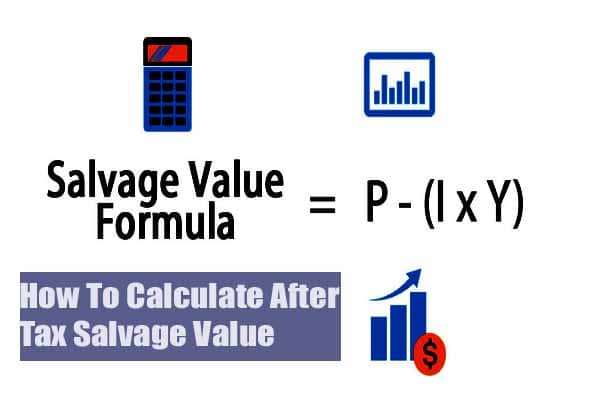As a business owner, you’re often tasked with getting rid of old equipment. It’s an inevitable process that will happen at some point in your company’s lifespan. But how do you know what to price your used machinery at? You could price it for the lowest amount possible and hope someone buys it – but this strategy won’t be very profitable if no one is interested in buying it! The after-tax salvage value is key when pricing any machinery. In this blog post, we’ll discuss how to calculate after-tax salvage value so you can get the most profit out of your next sale.

If you’re unsure how to calculate after-tax salvage value, this post will guide you through the steps. You can also read our other blog posts about calculating the pre-tax and net salvage values if you want more background information. If your business is still young and hasn’t sold any equipment yet, our article on when a company should sell used machinery might be helpful to read as well.
To determine what price to list your equipment for sale, you need to know exactly how much it’s worth. The first step in doing this is determining its pre-tax salvage value – the amount of money regenerated by selling it minus all expenses involved during resale ( example: fees paid to an auction house).
Recommended for you: How To Buy An Existing Business With No Money
Generally, this amount will be lower than the equipment’s resale price. However, it has to go through certain processes to make it marketable when you sell the equipment. These processes can be expensive and cut into your profit margins. Let’s look at an example to see how this works:
An industrial company bought a used forklift for $40,000 two years ago and now wants to remove it. The company considers all costs of reselling the machine (marketing fees, repainting, new tires), which brings the pre-tax salvage value down to $30,000 after calculating expenses. In other words – if we were away from these costs and wanted to resell the machine, we would make a $30,000 profit.
Determining the after-tax salvage value of a used piece of equipment requires more steps than just figuring out its pre-tax value. After we figure out the pre-tax value, we need to add back in taxes. Here’s how it works:
First, we have to subtract any sales tax that might be on the resale price from its pre-tax salvage value – this is because sales tax is paid when you sell it, which means there is no longer any leftover for us to pay. For example: if your state has 4% sales tax and you sell your forklift for $30,000, you’ll also have to pay that 4% sales tax. Subtracting this from the resale price makes it $29,400, which we’ll use as our after-tax salvage value for this example.
Next, we have to factor in tax brackets. We’re going to assume you are in a state with a flat income tax system to simplify things (some states have variable income taxes based on income). After you figure out your pre-tax salvage value, determine your taxable income for the year following the sale of your forklift and add 10%. Then subtract that number from your pre-tax salvage value:
$30,000 (pre-tax salvage value) + ($30,000 * .10) = $30,300 (after-tax salvage value)
If your forklift is worth $30,000 and you are in a 10% income tax bracket, the after-tax salvage value would be $30,300.
We recommend that you factor in your financial situation when determining which sales tax bracket you should use. Check out this article to help determine what yours is if it isn’t flat. Also, keep in mind that different states have different sales tax rates – the above example assumes a 4% state sales tax rate.
When listing your used machinery for sale on our website, all you need to do is select any of our pricing tools from the dropdown menu next to “What’s This Worth?” and answer a few easy questions. Of course, if your machine is worth more than you expected, we’ll recommend a higher price.
